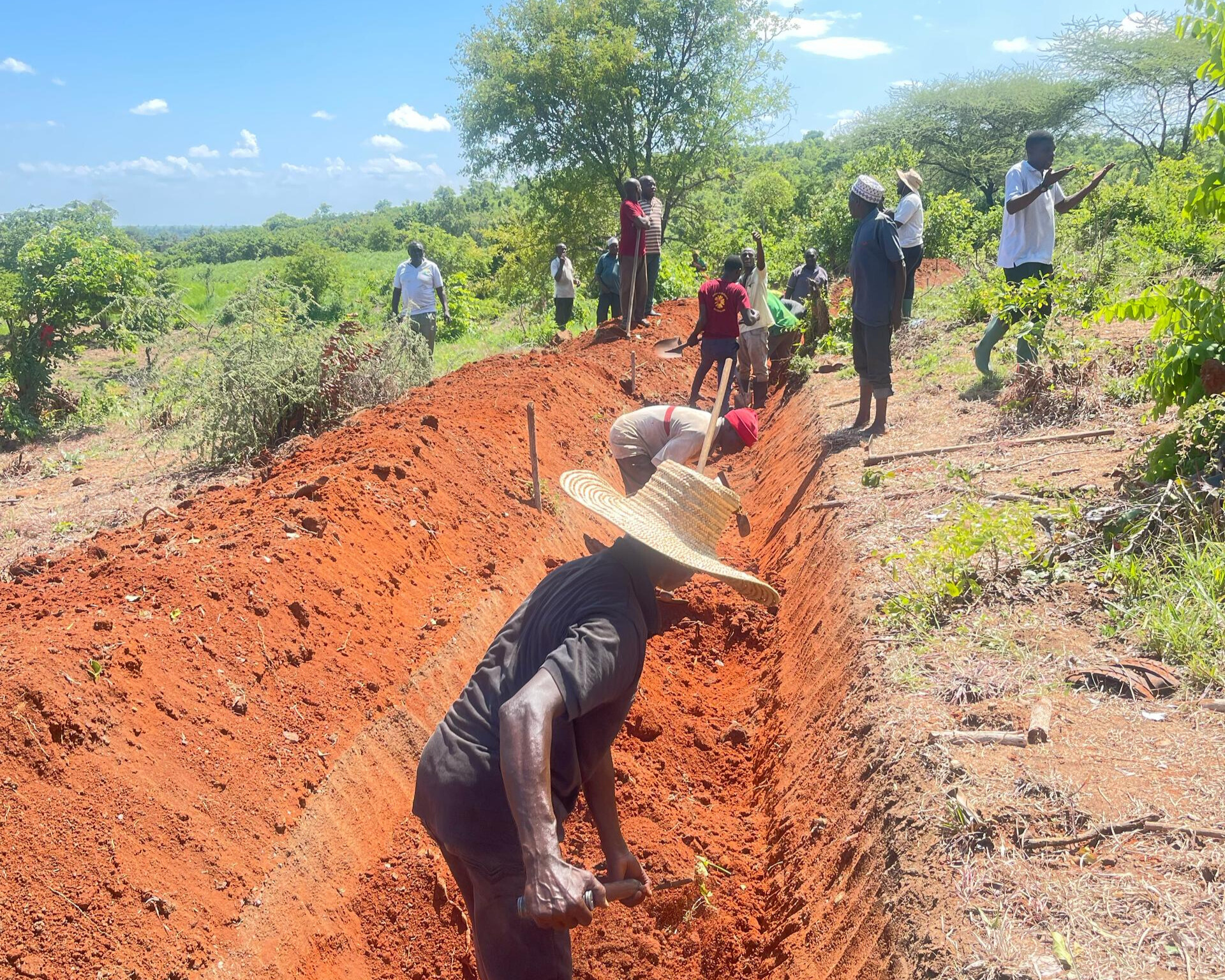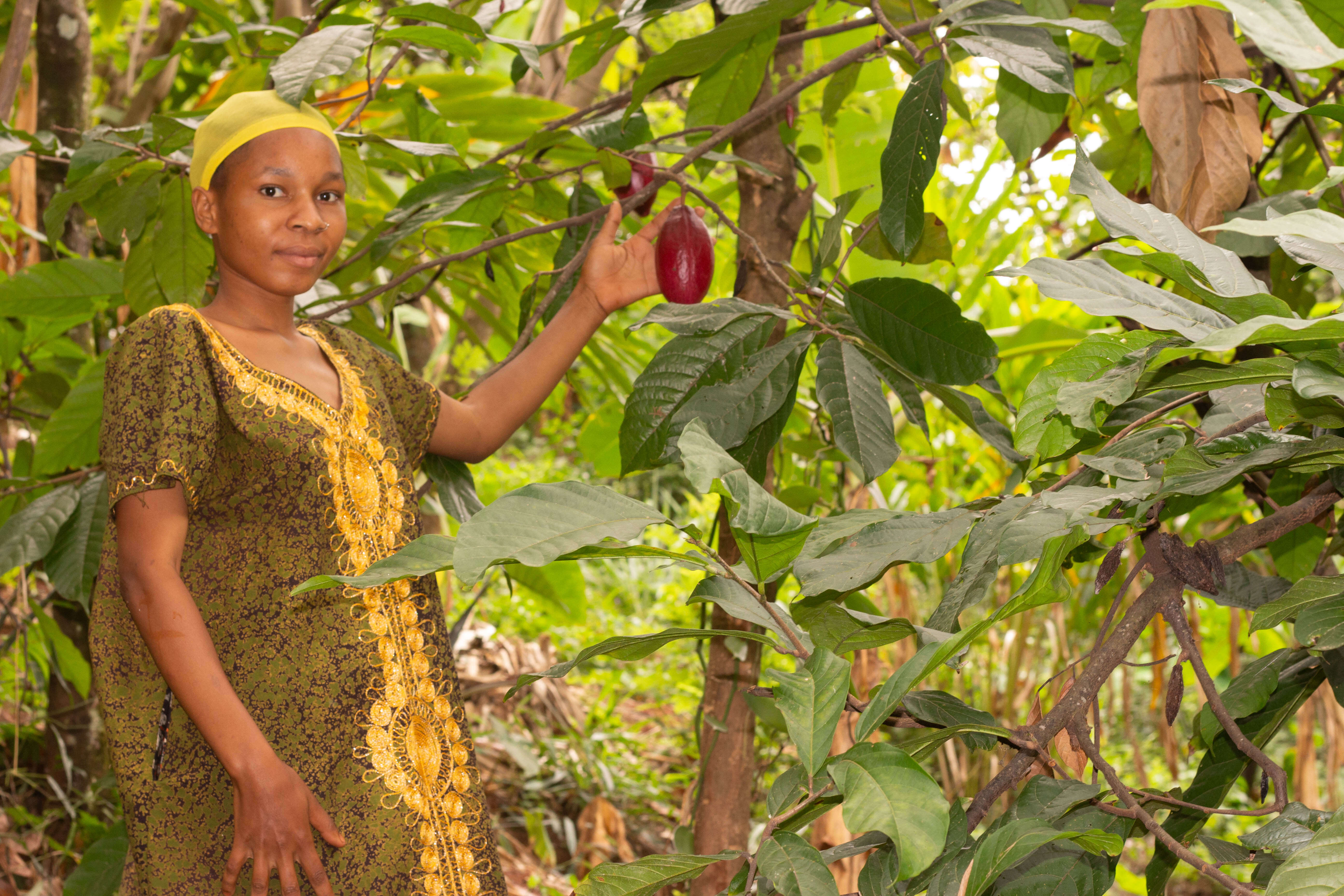5 rooms, kitchen, bath
I would like to invite you to go on a journey with me.
We are heading to a mountainous region in Tanzania – steep slopes, bare rocks and extreme weather conditions. An area which is perfectly suitable for agriculture, but only if you like challenges.

You definitely need confidence in what a human being can achieve and a solid attitude towards life if you want to be a successful farmer up here. The path ascends to the Uluguru Mountains. We are climbing on a bumpy rough road, passing simple dwellings whose bases were carved into the steep slopes. Maize plants are growing all over on fields which seem to be aligned rather vertically than horizontally. After an arduous ride of half an hour on the motorbike we reach a village in the heart of the Uluguru Mountains in the Morogoro Region, Tanzania. The people who are around seem to busy but relaxed at the same time. On the wayside there are deep-fried pastries on sale in a brightly coloured plastic bucket – that suits perfectly because it's time for breakfast now. The villagers are used to westerners visiting this place and welcome them in a friendly and hospitable way. Their story arouses interest, so more and more visitors find their way into this small mountain village.Hadija Kibwana, a middle aged, very hospitable woman who wears colourful cloth wrapped around her body, greets us. She’s the chairperson of the farmer group in Towelo. After a while a man arrives. He’s wearing dirty clothes, tattered gumboots, which do not really serve their purpose anymore, and a cap with a faded SAT logo, pulled down deeply into his face. He quickly turns out to be the one whom not only we, but practically all the visitors coming to this place are looking for. His Name is Pius Paulini, aged about 50, four children, mountain farmer in Towelo. We don’t need to know more particulars about him for the time being because he has something different to tell. At first glance his story seems like a daydream. However, if you have a closer look, what he’s going to tell us turns out to be an experience many small scale farmers in Tanzania and beyond would find desirable.

“The times when we used to spread synthetic fertilizers and to spray poisonous pesticides were hard: there was a lack of money and the costs for agriculture were high. We had to borrow money for our children’s school fees and we had to chalk up at the shops to make ends meet. We couldn’t really make a profit by farming so we had to pursue other work as well in order to earn a little money along the way”, the chairperson of the farmer group from Towelo remembers. Back then, synthetic fertilizer cost about 2.500 Tsh (1.20 €) per kilogram. That means that a small-scale farmer like Pius Paulini had to bring up 250.000 Tsh per year in order to be able to farm at all. In addition to that the pesticides cost about 45.000 Tsh. Summed up this is quite a fortune for a small scale farmer, which has to be scrimped and saved. For a farmer like Pius Paulini this meant putting aside a certain fraction of the 2.00€ that he used to have at his disposal every day.

In the year 2009 people from Towelo became aware of the organisation Sustainable Agriculture Tanzania (SAT). They decided to form a farmer group and to be trained in organic agriculture. In 2010 the first demonstration garden was created and the group began to dig terraces, to make compost and to cultivate favourable plants and trees. After just one year many farmers of the group have become able to use their new knowledge on their own fields. The group members helped each other to convert to organic agriculture and together they started to build terraces on the steep slopes. “The success became visible instantly, simply because the health of many of our farmers improved and the children weren’t falling sick so often anymore. After two more years a clear increase in yields could be realised, which in turn positively affected our income” tells us Pius. “It wasn’t exceptional that from one acre we only harvested 15 sacks of maize. Nowadays, depending on the weather, we may get 20 to 25 sacks out of the same area thanks to kilimo hai (organic agriculture).”With visible anticipation, Pius leads us further up the mountain on a small footpath. After a few minutes we are standing in front of tall brick walls. These walls are part of a house that’s being built and whose size is rather exceptional in this mountainous environment. We are taken on a guided tour through the bare brickwork by the proud landlord himself. In total we count five rooms and a bathroom. “I managed to save the money for the building materials within one year. Needless to say that this was apart from the everyday expenses”, adds Pius Paulini. “The sand for the construction work I carried it myself from the river to this place, around ten to fifteen buckets every day,

and then off I went into the field.” Being asked how far away the place is where you can get the sand, Hadija and Pius just reply by smirking. Pius points to a faraway place somewhere on the mountain and simply says: “Up there.” With this kind of enthusiasm for one’s work it is not surprising that the farmer has a very healthy attitude towards physical activities, especially when it comes to agricultural ones. “Laziness eventually involves great damage, whereas hard work bears fruit. A lot of farmers use artificial fertilizer out of pure convenience. Organic agriculture implies hard work, but it is well worth it. Take a look at me and how my life has changed for the better.” There really is nothing more to add to this statement.But Hadija Kibwana too, has ambitious plans. She already has gathered the bricks needed for the construction of her own house, which she emphasizes, because up to now, she has been renting a house. We owe SAT a lot, because they enabled us to do all of this and, so to speak, taught us independency”, the two say almost unanimously. It seems that there is nothing more to add here either.

Heading back from this small journey, I feel different – a slight sense of pride and satisfaction is spreading within me. “If in Towelo, where conditions have appeared to be rather difficult for people, it is possible to find a way back to natural agriculture and at the same time conserve and support the environment in a sustainable way, then producing healthy foods must be possible just about anywhere”, I think to myself. Assuming of course, that there is a little bit of Pius’ spirit in every one of us.






